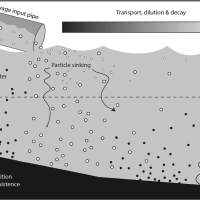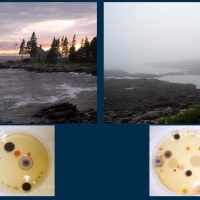Microbial Bioremediation: Harnessing Microbes for Environmental Cleanup
The environmental footprint of human progress has come into stark focus over the past century, revealing a substantial accrual of contaminants in our air, soil, and water systems. With the advent of the industrial age and its proliferation into the 21st century, the consequential release of pollutants into our ecosystems has presented a formidable challenge to global health, biodiversity, and climate stability. Amid this gloomy backdrop, one solution has begun to shine brightly due to its intrinsic potential for a sustainable and effective remediation approach: Microbial Bioremediation.
Microbial bioremediation is a subdiscipline of environmental biotechnology that exploits the inherent metabolic diversity of microorganisms to degrade or transform environmental contaminants. This technique capitalizes on the evolutionary adaptability of microbes, their wide-ranging metabolic capabilities, and their ubiquity in virtually all ecosystems on Earth. It is possible to effectively remove pollutants or reduce their toxicity by manipulating microbial communities, thus rehabilitating contaminated environments.
This article aims to elucidate the intricate domain of microbial bioremediation, illuminating the molecular and ecological principles underlying its operation, its current applications and challenges, and the emergent technological innovations that promise to revolutionize the field. Our exploration will navigate the conceptual foundations of bioremediation, elaborate on the critical role of microbes, delve into the factors influencing microbial remediation processes, and discuss the strategies to enhance their effectiveness. In this context, if you need assistance with your environmental project, you can always consider engaging experts to "write my lab report." We will also address the challenges and limitations of this approach, along with the promising future directions and advances in microbial bioremediation.
Understanding Bioremediation
Bioremediation uses biological organisms, primarily microbes, to defuse environmental time bombs - harmful substances - transforming them into less toxic or benign forms. It's a natural detoxification process, akin to nature's built-in janitorial squad, ready to tackle the aftermath of diverse life processes, including human industrial exploits.
In-situ and ex-situ bioremediation, the two primary channels this natural process operates, dictate where the cleanup process occurs. In-situ bioremediation represents a home-turf approach, applying microbes directly to the contamination site, bypassing the need to excavate or extract pollutants. Ex-situ bioremediation adopts an 'outsource' model, removing contaminated material from its original abode and treating it elsewhere, providing a controlled environment conducive to precise management.
The Role of Microbes in Bioremediation
Microbes, the infantry of bioremediation, come in various forms - bacteria, fungi, protists, and archaea, to name a few. Their strength lies in their diversity. Each microbial species, armed with its unique metabolic capabilities, can degrade or transform a broad spectrum of pollutants. With its medley of skills, this microbial ensemble is akin to nature's toolbox, replete with tools to fix a diverse array of environmental hitches.
These microbes enact their bioremediation roles via two primary mechanisms. Direct degradation positions the pollutant as a source of sustenance - carbon or energy - for the microbe. It's analogous to devouring a fruit for energy; the microbes ingest pollutants, breaking them down into simpler, less harmful compounds. In contrast, co-metabolism positions the pollutant degradation as a fortuitous byproduct of the microbe's other metabolic activities - comparable to inadvertently knocking over a stack of papers while reaching for a book.
Applications of Microbial Bioremediation
The applications of microbial bioremediation are as diverse as the microbes themselves, exploiting their unique attributes and affinities towards specific pollutants.
- Soil remediation. Soil, the lifeblood of terrestrial ecosystems, is often under siege from pollutants like industrial waste, agricultural runoff, and oil spills. Microbes can break down these invaders, ranging from petroleum hydrocarbons to heavy metals, effectively restoring the soil's vitality.
- Water remediation. Worldwide, our water bodies are under assault from chemical and biological pollutants - effluents from industries, domestic waste, and agricultural runoff. Specialized microbes can neutralize these threats, safeguarding aquatic life and ensuring the purity of water resources.
- Air remediation. Certain microbial species can neutralize airborne pollutants, contributing to the battle against air pollution.
A litany of success stories testify to microbial bioremediation's practical potential. For instance, the cleanup of the Exxon Valdez oil spill leveraged the oil-degrading capabilities of the bacterium Pseudomonas putida to impressive effect.
Factors Influencing Microbial Bioremediation
The effectiveness of microbial bioremediation isn't a given; a host of factors can enhance or impede the process. Environmental elements, like temperature, pH, and moisture levels, can shape microbial growth and activity. For example, acidic soil may favor the growth of fungi over bacteria, influencing the bioremediation process's rate and efficacy.
Microbial factors hold sway over the process. The genetic makeup, metabolic capabilities, and adaptability of the microbes in question can make or break the effectiveness of bioremediation. The diversity and composition of the microbial community at a site can profoundly dictate bioremediation outcomes.
The availability of nutrients and substrates, i.e., pollutants, can also determine the success of the bioremediation process. Essential nutrients can stimulate microbial growth and activity, enhancing bioremediation, while their absence can stifle the process.
Finally, the characteristics of the contaminant - its concentration, toxicity, and physical state - play pivotal roles. For example, high concentrations of a toxic contaminant might inhibit microbial activity, while the chemical structure of certain pollutants may render them more readily degradable than others.
Enhancing Microbial Bioremediation
Despite many challenges, humanity has devised ways to boost microbial bioremediation. Bioaugmentation, one such approach, introduces cultured pollutant-degrading microbes to contaminated sites, thus bolstering the pool of beneficial microbes.
Another enhancement method, biostimulation, involves enriching a contaminated site with nutrients or other amendments to stimulate the growth of indigenous pollutant-degrading microbes. Imagine adding fertilizer to a garden, with the 'plants' being microbes and the 'garden' a contaminated site.
Biofilm formation offers another route to enhance microbial bioremediation. Biofilms are communal living arrangements of microorganisms, adhering to each other and surfaces, encased in a matrix of extracellular polymeric substances. Within biofilms, microbes can share resources, tolerate environmental stresses, and cooperate better than they can as individual cells.
Furthermore, the advent of genetic engineering and synthetic biology has unlocked the potential for tailor-made microbes capable of enhanced pollutant degradation, resilience to harsh environmental conditions or even the production of useful byproducts from waste materials.
Challenges and Limitations of Microbial Bioremediation
Despite its promise, microbial bioremediation isn't without its limitations. The toxicity of certain contaminants can stymie microbial activity, thwarting bioremediation efforts. Similarly, the resistance of certain pollutants to degradation can render bioremediation ineffective.
Site-specific challenges also abound, including the accessibility of the site, the distribution of contaminants, and the physical and chemical characteristics of the environment. For instance, a contaminated site located underground or in a densely populated area could present logistical hurdles for bioremediation.
Regulatory and policy considerations, particularly when genetically modified organisms are in play, pose a significant challenge. The potential risks and unintended consequences of introducing such organisms into the environment necessitate a careful balance of risks and rewards.
For detailed information on water quality and air quality, please check out the following article.
Future Directions and Advances in Microbial Bioremediation
-
Environmental Bioinformatics and Systems Biology: As the field of microbial bioremediation expands, so does the need for comprehensive data management and analysis. Environmental bioinformatics will play a vital role in handling vast datasets related to microbial communities, genes, and metabolic pathways involved in bioremediation processes. Systems biology approaches will aid in understanding the intricate interactions within microbial consortia, guiding the design of optimized bioremediation strategies.
-
Microbiome Engineering: Building upon the advances in synthetic biology, microbiome engineering aims to create synthetic microbial consortia tailored for specific bioremediation tasks. By combining the strengths of different microbial species and genetically engineering them to work synergistically, researchers can enhance bioremediation efficiency and address complex pollution scenarios more effectively.
-
Microbial Electrochemical Systems (MES): MES is an emerging technology that integrates microbial activity with electrochemical processes to drive bioremediation reactions. These systems have shown promise in treating diverse pollutants, including heavy metals and organic contaminants. Further research in MES holds the potential to revolutionize the efficiency and scalability of microbial bioremediation techniques.
-
Bioremediation in Extreme Environments: Exploring bioremediation approaches in extreme environments, such as deep-sea sediments, polar regions, or contaminated industrial sites, presents unique challenges and opportunities. Understanding how microorganisms adapt and function in these extreme conditions could lead to groundbreaking bioremediation solutions applicable to a broader range of environmental scenarios.
-
Microbial Nanobots: Building on nanotechnology, the concept of microbial nanobots involves engineering microorganisms with nano-sized components to carry out targeted bioremediation tasks. These "nanobots" could navigate complex environments, identify pollutants, and perform remediation at the molecular level, revolutionizing the precision and effectiveness of bioremediation.
-
Microbial Bioremediation in Space Exploration: As humanity ventures into space and establishes habitats on other planets or celestial bodies, the issue of pollution and waste management becomes critical. Research into microbial bioremediation for space environments could help maintain ecological balance and support sustainable practices in extraterrestrial habitats.
-
Public Awareness and Education: With the growing importance of microbial bioremediation in environmental conservation, public awareness and education about its potential benefits and risks become essential. Promoting responsible bioremediation practices and fostering understanding among policymakers and the general public will play a vital role in ensuring the safe and widespread implementation of these technologies.
-
Policy and Regulation: As microbial bioremediation technologies evolve and gain prominence, clear and adaptive regulatory frameworks will be necessary to address potential ecological, ethical, and safety concerns. Collaborations between scientists, policymakers, and stakeholders will be vital in shaping these regulations and facilitating responsible innovation.
-
Commercial Applications and Scaling Up: To realize the full potential of microbial bioremediation, commercialization and scaling up of bioremediation technologies are essential. Research and development efforts must focus on making these approaches cost-effective, efficient, and scalable for large-scale environmental remediation projects.
-
Climate Change Mitigation: Microbial bioremediation can also play a role in climate change mitigation by sequestering carbon through enhanced soil microbial activity or utilizing microorganisms to degrade methane emissions from various sources. Exploring these avenues will further demonstrate the versatility and significance of microbial bioremediation in addressing global environmental challenges.
In conclusion, the future of microbial bioremediation holds great promise, with the integration of cutting-edge technologies, interdisciplinary collaboration, and a focus on sustainability and responsible innovation. As we embark on this journey, it is crucial to continue appreciating the remarkable capabilities of microorganisms and harnessing their potential to safeguard our planet's health and ecological balance. By aligning scientific progress with ethical considerations and public support, microbial bioremediation can play a pivotal role in creating a cleaner and healthier future for generations to come.







